
It’s another week and another round of ebb-and-flow for U.S. grain export sales. The latest data from USDA show corn, soybean and wheat exports slumping from the prior week, with Farm Futures senior grain market analyst Bryce Knorr offering some particular concern for wheat sales.
“Export sales for wheat remain disappointing, and question USDA’s assumption that business will pick up later in the marketing year when Russia runs low on supplies,” he says. “The agency chose not to lower its forecast for 2018 sales but may be forced to do so at some point because shipments are the lowest in at last 30 years four months through the marketing year.”
Corn saw 39.6 million bushels in export sales for the week ending October 4, which was down moderately from the prior week’s total of 56.3 million bushels and trade expectations of 49.2 million bushels. Still, exports exceeded the weekly rate needed to reach USDA forecasts of 36.7 million bushels.
Corn export shipments of 63.2 million bushels last week still kept well ahead of USDA forecasts, Knorr notes. For the 2018/19 marketing year, which began September 1, Mexico is the leading destination for U.S. corn export commitments, with 31% of the total. Other top destinations include Japan (15%), unknown destinations (13%), South Korea (9%) and Taiwan (4%).
Soybean exports found 16.2 million bushels in old crop sales and another 200,000 bushels in new crop sales, for a total of 16.3 million bushels. That number came in significantly below the prior week’s tally of 56.1 million bushels and was less than half of trade estimates of 38.6 million bushels. The weekly rate needed to match USDA forecasts moved higher, to 24.5 million bushels.
“Soybean business was slow but should be spread out during the marketing year more than usual as China gobbles up supplies out of South America, leaving the rest of the world to fend for itself,” Knorr says. “China’s total soybean imports for September were about the same as the previous year, so there’s no indication yet buyers are actually slowing purchases in line with government policy to cut use of protein in animal feeds.”
Soybean export shipments totaled 32.5 million bushels last week. For the 2018/19 marketing year, which began September 1, unknown destinations represented the top destination for U.S. soybean export commitments, accounting for 40% of the total. Other top destinations so far include Mexico (15%), the European Union (6%), Argentina (5%) and China (5%).
Wheat exports found 12.5 million bushels in total sales last week, moving moderately below the prior week’s tally of 16.0 million bushels and trade estimates of 16.5 million bushels. The weekly rate needed to meet USDA forecasts moved higher, to 17.5 million bushels.
Wheat export shipments reached 18.5 million bushels last week, also below the weekly rate needed to match USDA forecasts, now at 22.5 million bushels. Since the 2018/19 marketing year began June 1, the Philippines continue to be the leading destination for U.S. wheat export commitments, accounting for 15% of the total. Other top destinations include Mexico (12%), Japan (12%), South Korea (7%) and unknown destinations (6%).
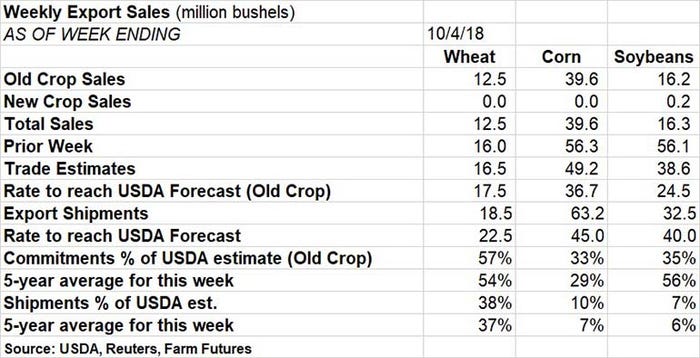

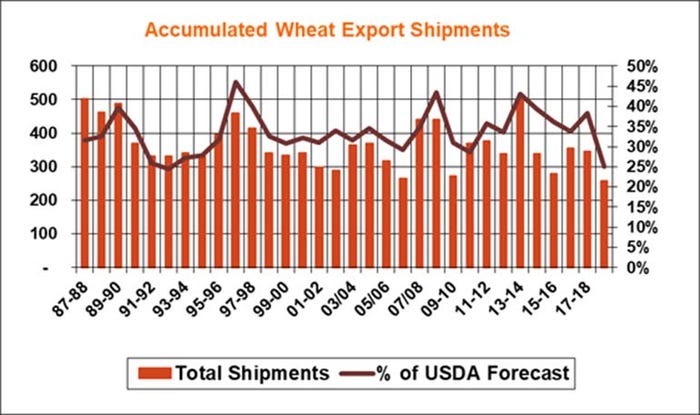
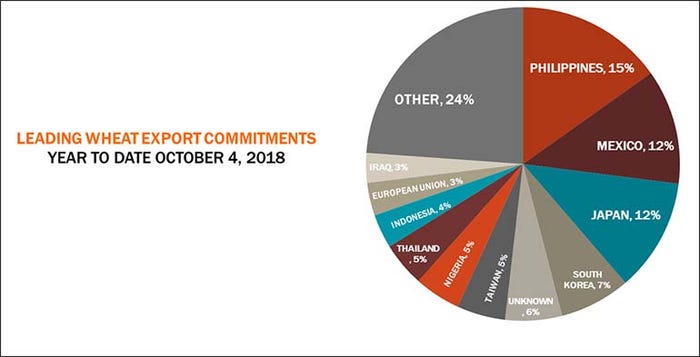

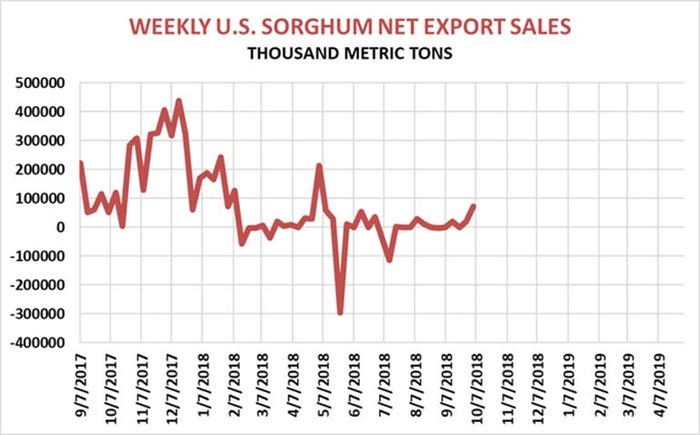
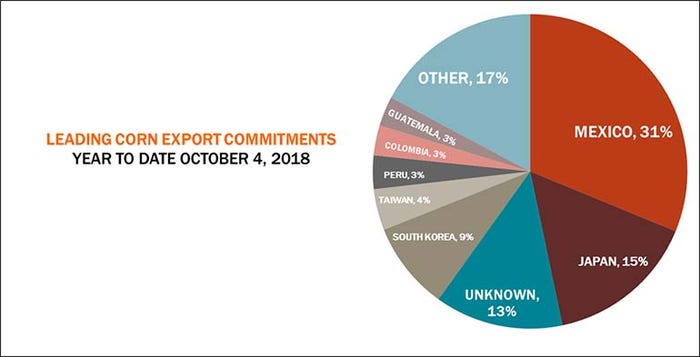

About the Author(s)
You May Also Like






